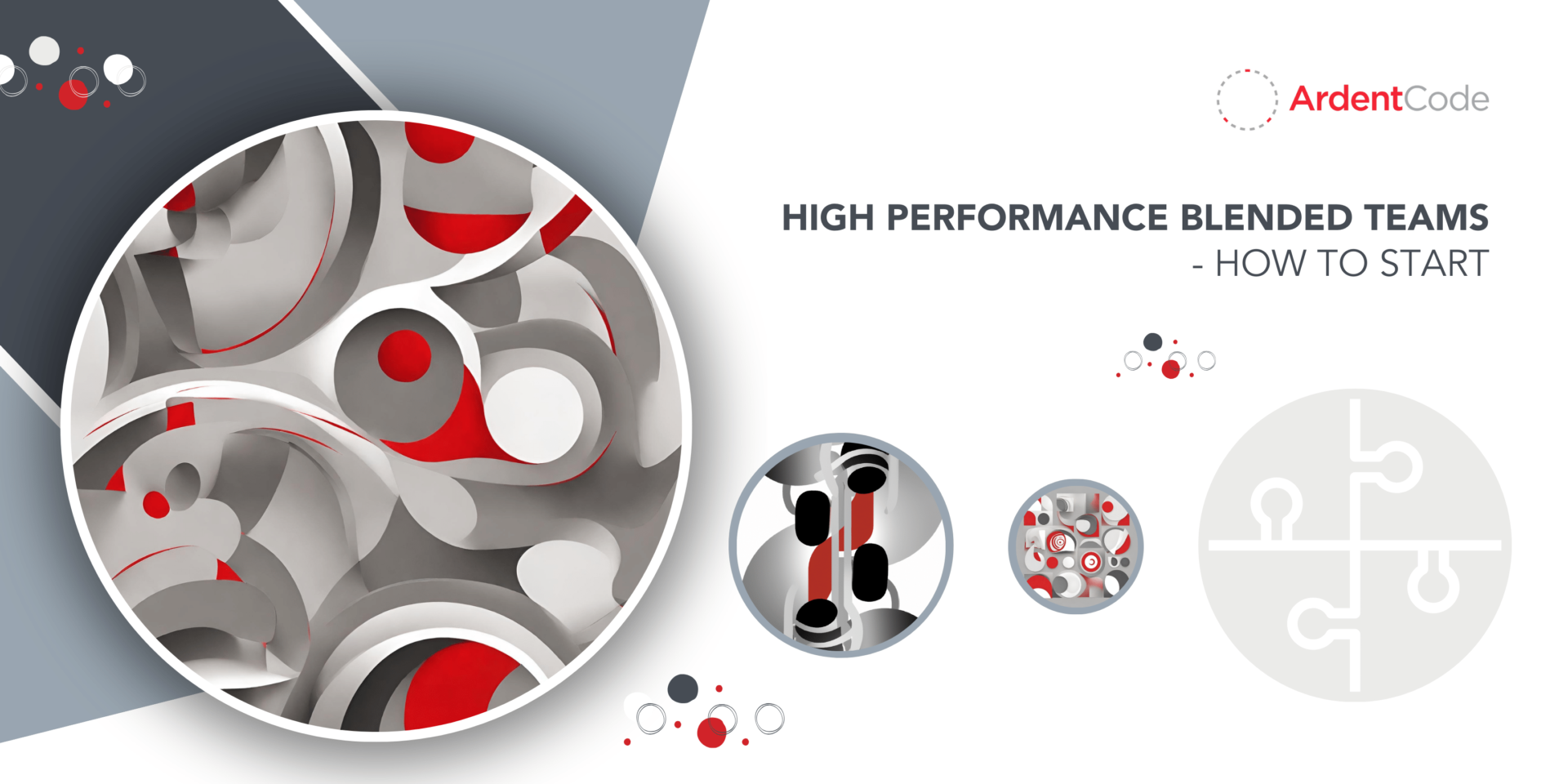
Hundreds of articles have already been written about what are the motivations for opening up to outsourcing. The strongest shaping arguments are cost reduction, access to highly qualified specialists and flexibility in the broadest sense. However, it is worth leaning into the process of forming blended teams itself.
Blended, which means?
Let’s define what blended teams are. For “blended” does not simply mean a mixture of components, but a completely new combination. The term, taken from everyday language, captures well the idea of creating teams from at least two organizations. Thanks to the intermingling of experience, knowledge and skills, the competence of such a team becomes much higher. By interacting with each other, the resulting cooperation results in an unavailable “alone” result of solutions and increased competence[1].
Maturation
It is also not insignificant that blended teams, by interpenetrating each other, mature and create a completely new quality. Maturity in the context of technology teams means very high competence, calmness, and experience. And the realization that every difficulty can be solved over time. If only, to write completely new software or applications that respond to the needs specified in the project.
Foundations
The selection of people, forming mixed teams, is the foundation for creating high-performance teams. Involvement in recruitment, proper preparation for it and identification of needs, increases the chances of later success in building a new team. Both competence and certain personality traits are important. This influences the maintenance of values relevant to the entire organization. Collaboration between teams where the foundation has been taken care of allows the development process to run smoothly.
Communication
For performance appraisal to be implemented, it is necessary to develop a project foundation and process. At this stage, the permeation of experiences can determine the success of cooperation. By opening to ideas, comments, and suggestions from an external, experienced partner, the client can receive solutions that surpass initial assumptions. At the same time, the phase of findings, briefs and debriefs is – albeit somewhat time-consuming – needed to finalize what situation will be evaluated positively. A service provider with international, corporate experience – even on the scale of a few or a dozen people in a project – can shed light from a completely different perspective and influence the outcome. All this to support the client’s success and enrich its know-how.
Performance – communication or skills?
The effectiveness of the cooperation can be assessed already during the collaboration, which is facilitated by feedback sessions and status meetings. A focus on partnership and mutual respect lay the groundwork for creating a situation in which the team joining the client feels a sense of responsibility for achieving the goals. This is a desirable situation, as productivity and commitment naturally increase when team members feel part of the overall project[2].
Summary
Recognizing that the groundwork for forming high-performance blended teams begins long before establishing a business relationship is essential to developing the concept. There is a huge difference, between body leasing, typically in simple service outsourcing, and developing team competencies internally. This can be achieved by inviting qualified, experienced, and committed professionals to join the team. This is the business model in which ArdentCode operates, basing cooperation with clients on the flow of knowledge and skills, taking care to secure know-how inside the clients’ structures.
[1] https://www.mckinsey.com/capabilities/people-and-organizational-performance/our-insights/beyond-hiring-how-companies-are-reskilling-to-address-talent-gaps [2023-11-18]
[2] https://your.yale.edu/we-know-teamwork-important-how-important [2023-11-27]